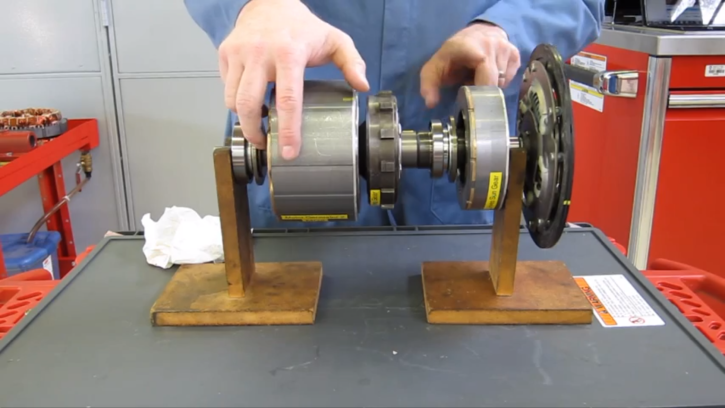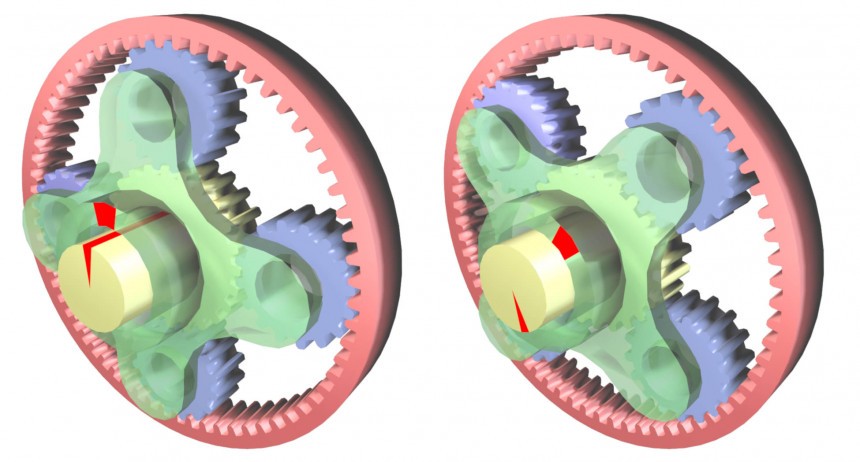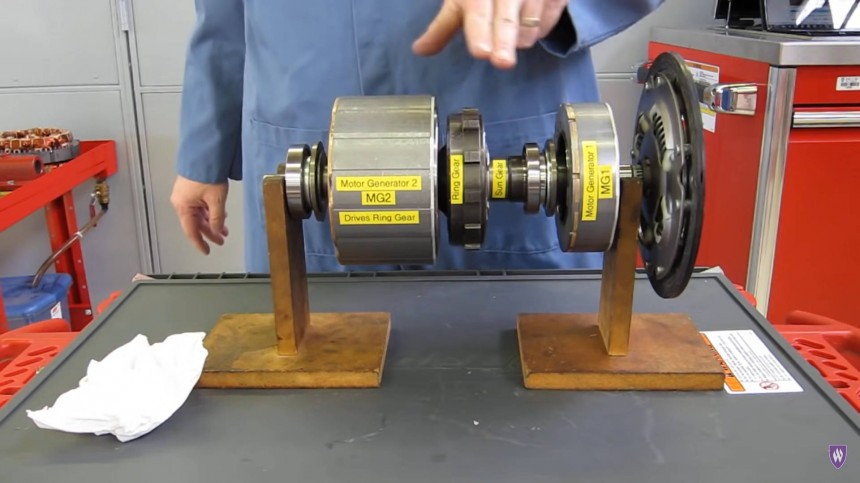Toyota made an important step forward when it made the Prius. Still, the secret to the car's success was not the hybrid system alone, but the transmission, which was named e-CVT. It didn't act like a regular, continuously variable transmission. It is smarter.
The Prius has one internal combustion engine, one starter generator, and one electric motor. These three main components are linked together by a clever planetary-gear system that allows the car to run with or without help from the IAC. It was Toyota's main advantage over its main competitor, Honda, which developed a more conservative hybrid system that proved better on the highways, but worse in cities.
Now, let's get back to the Prius and explain the components. For the internal combustion engine, Toyota used a gasoline powerplant. The inline-four mill is connected to a wet clutch that sends the torque to the transmission. In addition, a starter generator is also connected right after the clutch.
The starter generator is connected to a sun gear that goes into a planetary-gear assembly. Thus, the move from the starter-generator goes to the main motor in a 2.6:1 gear ratio. That means it must spin 2.6 times to rotate the main motor once.
The planetary-gear assembly connects to a ring gear that moves with the same rotation speed as the motor generator 2. Also, the ring gear sends the torque to the final drive via a chain. By now, things seem to look quite messy, but it's not.
When the car is driven, the main motor rotates the ring gear and the vehicle's wheels. It also moves the starter generator via the planetary gear, but in the opposite direction. At this point, the starter generator does not feed the battery pack, since the charging process would require more power from the main motor, which, in turn, will take more electricity.
Driving forward will make the starter-generator rotate faster (by a factor of 2.6:1, as mentioned above), so, at a certain speed, it will rotate too fast. Then, the IAC will kick in and start rotating in the same direction as the main motor, since they are connected by a shaft via the wet clutch. In addition, the starter generator's revolutions per minute are related to that shaft's rotation speed. So, since that will rotate in the same direction as the main motor, it will lead to fewer revolutions per minute for the starter generator.
Think about a pepper grinder. Suppose you are turning the arm in one direction, and someone rotates the grinder's body in the opposite direction. In that case, the grinder's arm will need fewer turns. Moreover, if they rotate it fast enough, you'll have to keep the handle steady, and the pepper inside will be transformed into powder.
So, the main motor (motor-generator 2) drives the ring gear that moves the wheels via a chain. The ring gear rotates a planetary gear that, in turn, rotates a sun gear. This, in turn, is connected through a planet carrier to the starter-generator, or the motor-generator 1, and to a wet clutch that, finally, connects to the internal combustion engine.
As long as the IAC is rotating, it is going in the same direction as the starter-generator, leading to a decreased overall rotation speed of the latter. So, the car's speed is adjusted via the rotation of the motor generator 2 and the ring gear.
When reversing, the Prius needs either one of the motor generators, depending on the load and speed. Usually, only the starter generator is used for slower speeds. Motor generator 2 is used for higher values, although it has a capped maximum speed. As expected, the same system is used by some Lexus vehicles.
Although the system looks pretty simple, its functioning principle is fairly complicated, so we'll let a Weber State University Automotive Technology Department professor demonstrate how it works and show you the differences in the videos below.
Now, let's get back to the Prius and explain the components. For the internal combustion engine, Toyota used a gasoline powerplant. The inline-four mill is connected to a wet clutch that sends the torque to the transmission. In addition, a starter generator is also connected right after the clutch.
The starter generator is connected to a sun gear that goes into a planetary-gear assembly. Thus, the move from the starter-generator goes to the main motor in a 2.6:1 gear ratio. That means it must spin 2.6 times to rotate the main motor once.
When the car is driven, the main motor rotates the ring gear and the vehicle's wheels. It also moves the starter generator via the planetary gear, but in the opposite direction. At this point, the starter generator does not feed the battery pack, since the charging process would require more power from the main motor, which, in turn, will take more electricity.
Driving forward will make the starter-generator rotate faster (by a factor of 2.6:1, as mentioned above), so, at a certain speed, it will rotate too fast. Then, the IAC will kick in and start rotating in the same direction as the main motor, since they are connected by a shaft via the wet clutch. In addition, the starter generator's revolutions per minute are related to that shaft's rotation speed. So, since that will rotate in the same direction as the main motor, it will lead to fewer revolutions per minute for the starter generator.
Think about a pepper grinder. Suppose you are turning the arm in one direction, and someone rotates the grinder's body in the opposite direction. In that case, the grinder's arm will need fewer turns. Moreover, if they rotate it fast enough, you'll have to keep the handle steady, and the pepper inside will be transformed into powder.
As long as the IAC is rotating, it is going in the same direction as the starter-generator, leading to a decreased overall rotation speed of the latter. So, the car's speed is adjusted via the rotation of the motor generator 2 and the ring gear.
When reversing, the Prius needs either one of the motor generators, depending on the load and speed. Usually, only the starter generator is used for slower speeds. Motor generator 2 is used for higher values, although it has a capped maximum speed. As expected, the same system is used by some Lexus vehicles.
Although the system looks pretty simple, its functioning principle is fairly complicated, so we'll let a Weber State University Automotive Technology Department professor demonstrate how it works and show you the differences in the videos below.











